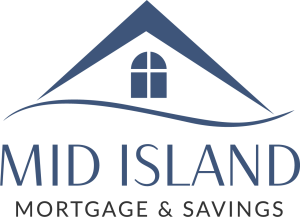First-Time Home Buyers 30-Year Insured Mortgage
Unlocking Homeownership: Canada’s New First-Time Home Buyers 30-Year Insured Mortgage
As home prices continue to rise, it can feel nearly impossible for first-time buyers to break into the market. The 30-year insured mortgage is a game-changer for young Families, and first time buyers trying to purchase their first home, especially in cities where prices have skyrocketed. By reducing monthly payments, it can ease the financial strain and help buyers afford homes they might have once thought out of reach.
Mortgage payments are stretched over a longer period (30 years instead of the typical 25 years). This makes monthly payments more affordable by reducing the amount you have to pay each month. For many, this could significantly ease the financial pressure of homeownership.
However, as with any financial commitment, it’s important for potential homeowners to understand the trade-offs, particularly when it comes to paying more interest over time. For those who can manage the long-term plan, it offers a much-needed pathway to homeownership in today’s competitive market.
Insured Mortgage: Canadian Mortgage and Housing Corporation (CMHC), Sagen or Canada Guaranty offer mortgage insurance. This provides protection for the lender in case of default on the mortgage, which means they offer their best mortgage interest rates. The downside for the buyer? You’ll pay a slightly higher mortgage insurance premium than you would on a 25 year mortgage (.20% above a 25 year amortization mortgage) which is calculated on the mortgage amount, and is included in your total mortgage amount. A few extra costs, but the overall impact on affordability can be worth it.
Eligibility Criteria?
To take advantage of this program, you’ll need to meet a few basic criteria:
- First-time buyer: You have never owned a home or haven’t owned a home in the past four years. Nor have you occupied a home as a principal place of residence you or your Spouse have owned in the last four years. You may qualify if you did own but recently experienced a breakdown of marriage/common-law partnership.
- Stable income: You need to prove that your household income is sufficient to manage the new mortgage, credit needs to be strong with timely repayment of debts, and the lower the debt load the better.
- Property cap: $1,500,000 maximum Purchase price
Benefits
- The Unique Benefit of the extended amortization is that only one borrower on the mortgage needs to be a first-time buyer to qualify. That means a parent can be cosigning for first time buyer child (or vice versa).
-
Lower Monthly Payments: Stretching out your mortgage means you won’t have to pay as much every month. This could free up extra money for other priorities like childcare, education, or savings.
-
More Home for Your Money: With lower monthly payments, many first-time buyers can afford a larger or more desirable property than they could with a traditional mortgage term.
-
Stability and Peace of Mind: A 30-year term can provide longer-term financial stability. With a more affordable monthly payment, families may have a better chance of weathering financial challenges in the future.
Potential Drawbacks
-
Higher Total Interest: While monthly payments are lower, you’ll pay more interest over the life of the loan because repayment is extended over 30 years. For those who are able, paying off the mortgage faster can reduce the total interest paid.
-
Mortgage Insurance Premiums: To protect lenders, CMHC (or Sagen or Canada Guaranty) require that a mortgage insurance premium be paid by the buyer. While this helps the affordability of monthly payments, it adds to the overall cost.
-
Qualification Hurdles: While the program is designed to help, qualifying may still be challenging for some families due to strict qualification requirements and regional property caps.
What Does This Mean for Young Canadian Families?
What difference will the 30- year amortization make to the bottom line–payments, and buying power for those trying to get into the housing market? Let’s look at a couple of options, and consider households that don’t have any debt, and have some savings put away for their home purchase.
Example: buying a condo with a purchase price of $549,000
25-year amortization: Down payment $29,900 Default Insurance Premium: $20,764 Payment: $2896/month Estimated household income required: $125,000/yr
30-year amortization Down payment $29,900 Default Insurance Premium: $21,803 Payment: $2693/month, Estimated household income required $117,400/yr
Consider combined household income amount of $100,000/year:
Another way to look at things would be from qualification standpoint. Let’s assume a household income of $100,000. With the old rules of a maximum amortization of 25 years for insured mortgages, these first-time buyers could qualify for a maximum purchase price of approximately $430,000. With a 30-year amortization these first-time buyers can qualify for $453,000 purchase price. (Scenario considers condo purchase with taxes and strata fees estimated for illustration purposes).
Do you want to see what these changes can mean for you?
Give your Broker a call and we can answer any questions you may have.



